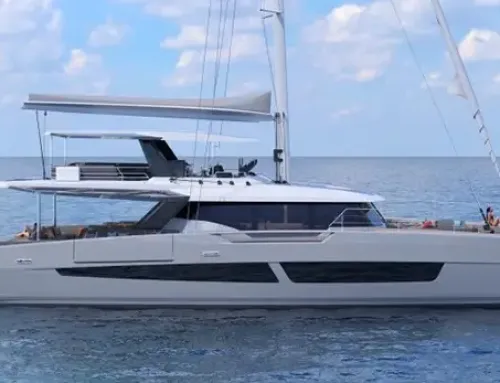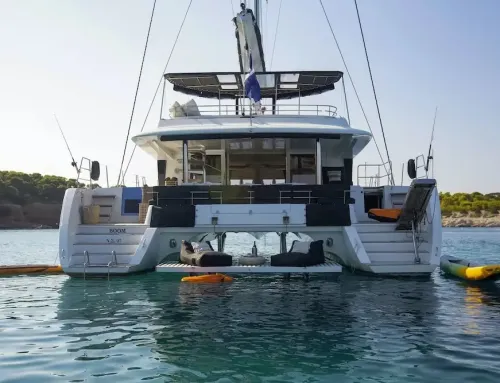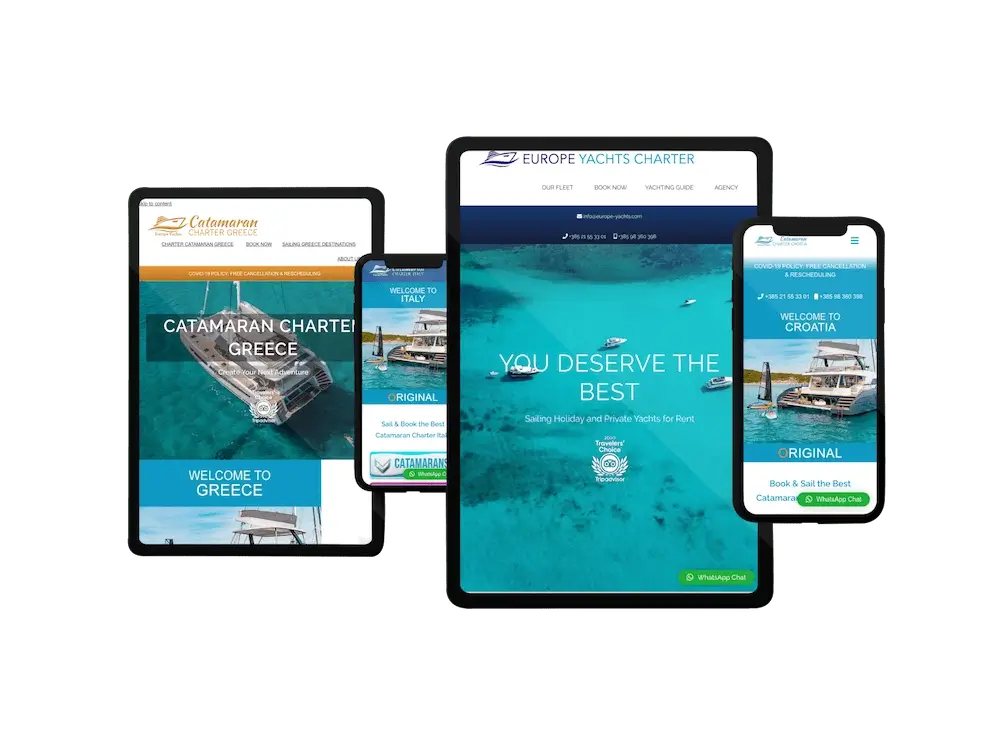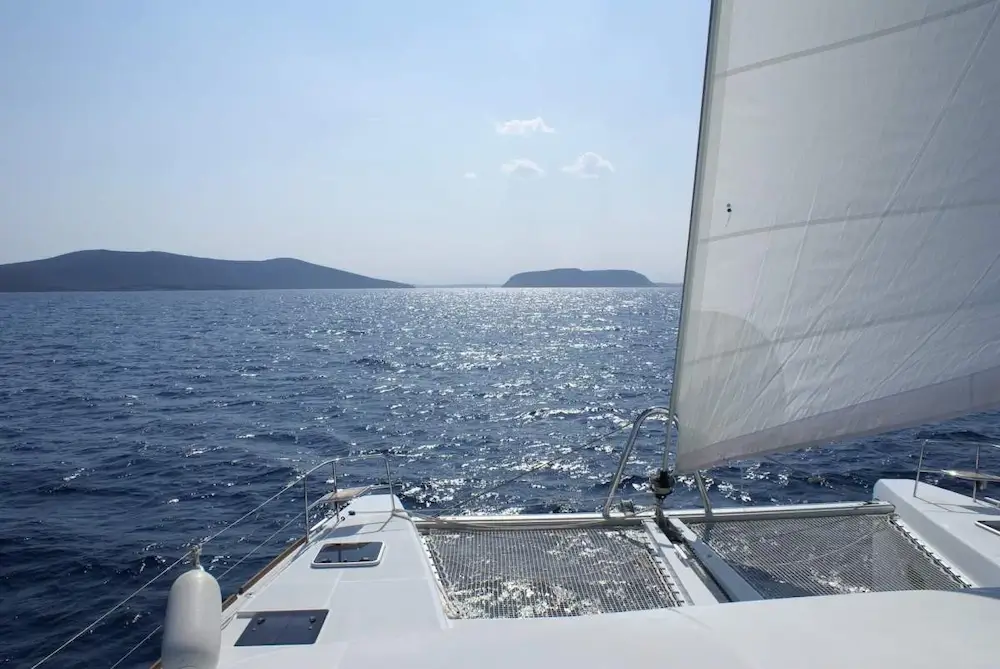
Are Catamarans Safe In Rough Seas?
The image of a sleek catamaran slicing through the azure waves is idyllic, often associated with luxury, relaxation, and calm seas. However, the sea is an unpredictable force, and even the most serene waters can turn treacherous. This leads many to wonder, are catamarans safe in rough seas?
Understanding Catamaran Design
Dual-Hull Dynamics
To understand the safety of catamarans, one must first grasp the basics of their design. Catamarans consist of two hulls connected by a bridge deck. This twin-hull structure provides greater lateral stability than traditional monohull vessels, which is a significant advantage in rough water conditions.
Stability and Comfort
Thanks to the wider stance provided by the two hulls, catamarans have a natural resistance to rolling, making them safer and more comfortable for passengers during choppy sea conditions.
Catamarans vs. Monohulls in Rough Weather
Behavior in High Waves
Catamarans are often believed to handle high waves better due to their increased buoyancy and pitching less than monohulls. This means they ride over waves more than through them, which can be less jarring for the crew and equipment.
The Risk of Capsizing
A significant concern for any sailor is capsizing. While monohulls can roll over more easily, catamarans have a wider base, making them less likely to capsize in rough seas, although it’s not impossible.
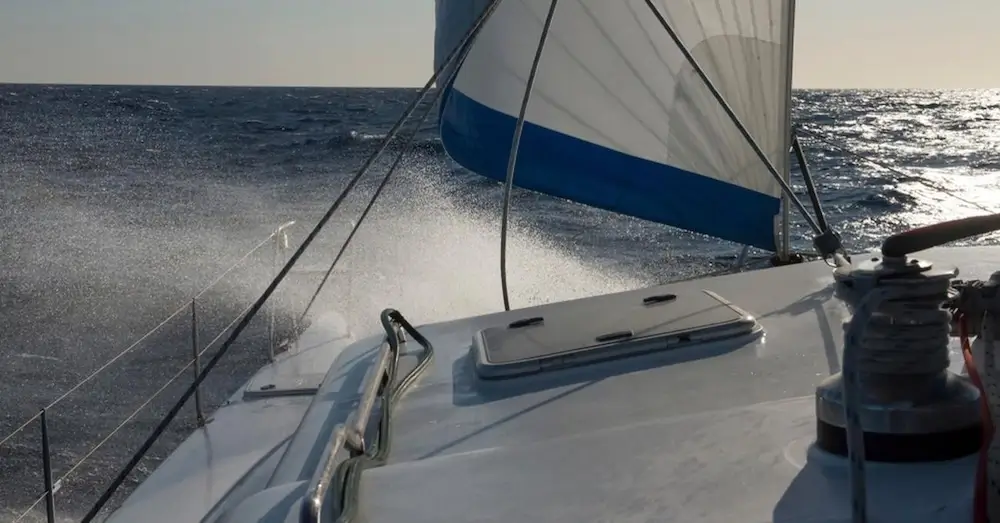
Are Catamarans Safe In Rough Seas 1
Advancements in Catamaran Safety
Modern Design Innovations
Modern catamarans incorporate advanced design features to enhance safety. These include reinforced materials, escape hatches, and designs that allow for better wave deflection.
Safety Equipment as Standard
Most modern catamarans are equipped with up-to-date safety equipment. EPIRBs, life rafts, and man-overboard systems are standard, providing peace of mind for sailors venturing into rougher waters.
The Role of the Skipper in Ensuring Safety
Experience Matters
The safety of a catamaran in challenging conditions often comes down to the skill and experience of the skipper. A knowledgeable skipper can navigate rough seas more effectively, making informed decisions to keep the vessel and crew safe.
Importance of Weather Knowledge
A skipper’s ability to read and predict weather conditions is crucial. Understanding weather patterns and knowing when to seek shelter or alter course can prevent encounters with dangerous sea states.
Chartering a Catamaran in Rough Seas
Choosing the Right Charter Company
When considering a yacht charter Croatia, it’s vital to select a company that prioritizes safety and maintains their fleet to handle various sea conditions.
Crewed Catamaran Charters for Extra Safety
For an added level of safety, consider opting for a Croatia yacht charter. The presence of a professional crew can significantly mitigate risks when sailing in unpredictable weather.
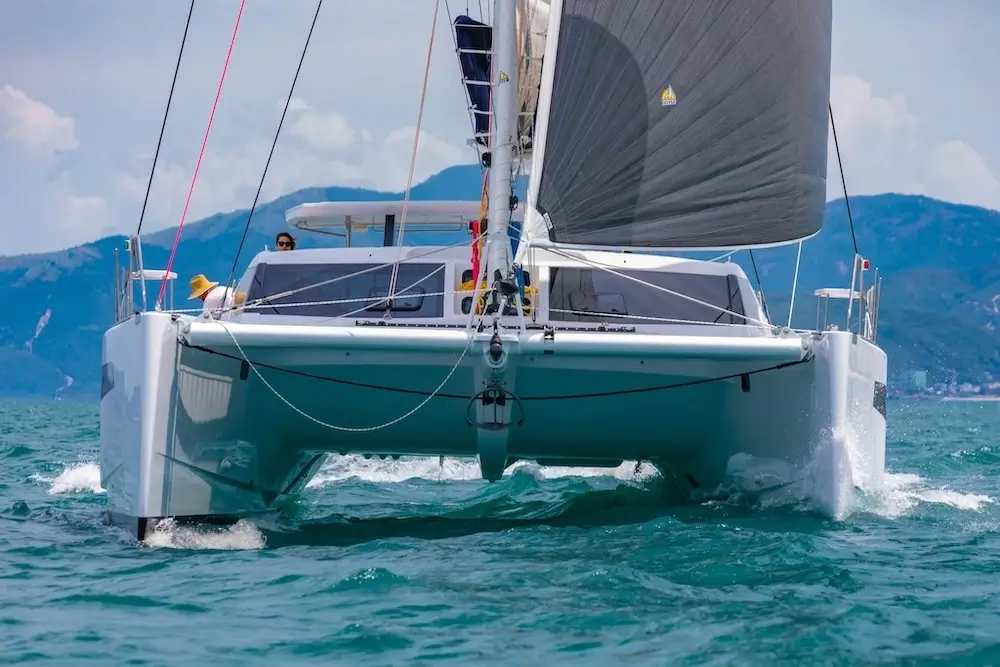
Are Catamarans Safe In Rough Seas 2
Preparation: The Key to Safe Sailing
Safety Briefings and Drills
Before setting sail, especially if rough seas are expected, thorough safety briefings and drills are essential. These prepare everyone on board for emergency situations.
The Importance of a Good Briefing
A comprehensive briefing should cover all safety protocols and the location and use of safety equipment. It should be tailored to the specific catamaran and the expected sea conditions.
What Sailors Say: Testimonials on Catamaran Safety
Gathering Insights from Experienced Sailors
Those with extensive sailing experience often have valuable insights into the safety of catamarans in rough seas. Testimonials and stories can provide real-world examples of how catamarans have handled challenging conditions.
Learning from Others’ Experiences
By studying other sailors’ experiences, potential charterers can learn what to expect and how to prepare for their own voyages in varying sea states.
Preparing Your Catamaran for Rough Sea Conditions
Structural Integrity Checks
Before heading into rough seas, it’s imperative to ensure the catamaran’s structural integrity. This means checking for any damage or weaknesses in the hulls, bridge deck, and rigging.
Essential Gear Inspections
Safety gear, such as life jackets, harnesses, and communication devices, must be inspected regularly. This gear can mean the difference between life and death if conditions worsen unexpectedly.
Best Practices for Sailing Catamarans in Rough Waters
Understanding the Limits
Every vessel has its limits, and it’s crucial for sailors to understand the capabilities and limitations of their catamaran when facing heavy seas.
Active Sailing Techniques
In rough waters, active sailing techniques such as adjusting speed and course to ride with the waves can help maintain control of the catamaran and keep the crew safe.
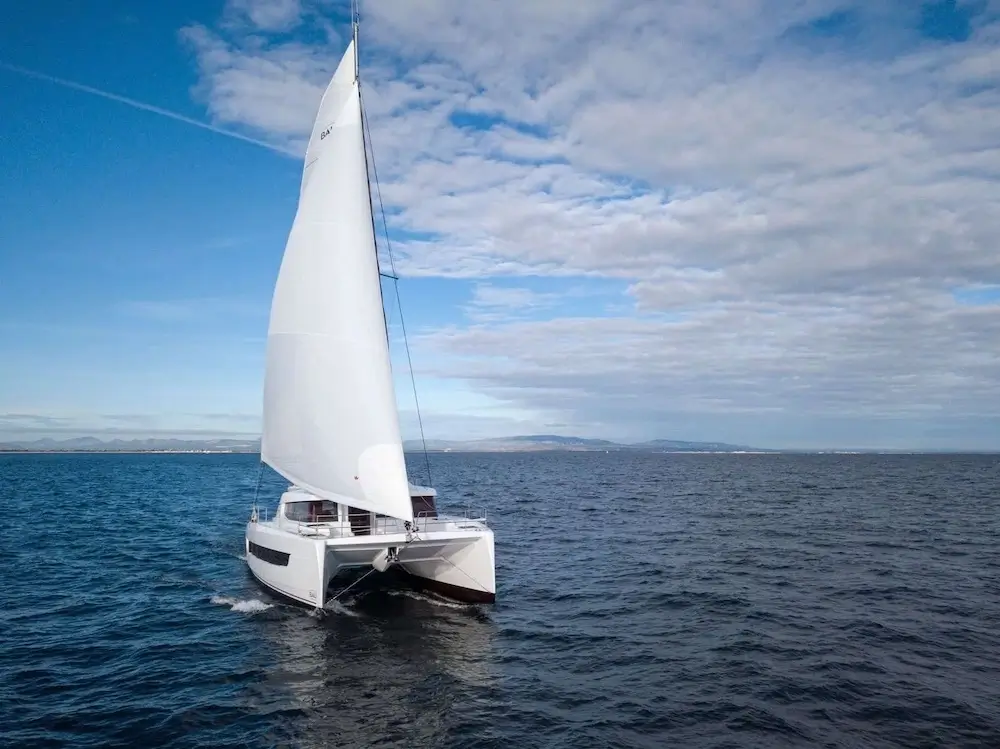
Are Catamarans Safe In Rough Seas 3
Handling Heavy Weather: Tips and Tricks
Reducing Sail
In high winds, reducing sail can help prevent overpowering the catamaran and losing control. Using storm jibs and smaller mainsails can be effective strategies.
The Importance of a Good Autopilot
A reliable autopilot can aid in maintaining a steady course in rough seas, allowing the crew to focus on other essential tasks.
The Psychological Aspect of Sailing in Rough Seas
Staying Calm Under Pressure
The mental state of the crew is as important as the physical state of the catamaran. Remaining calm and collected is vital for making rational decisions in harsh conditions.
Coping Mechanisms for Stress
Developing coping mechanisms for stress, such as deep breathing exercises or maintaining a routine, can help sailors maintain their composure when the seas get rough.
The Reality of Seasickness and Comfort Measures
Dealing with Seasickness
Rough seas often bring about seasickness. Having medication on hand and knowing how to mitigate the symptoms can improve comfort for everyone on board.
Creating a Comfortable Environment
Even in tough conditions, small comforts like dry clothes, warm food, and secure personal spaces can boost morale and endurance.
Technology and Weather Forecasting
The Advantages of Modern Meteorology
With advancements in technology, weather forecasting has become more accurate, allowing sailors to plan their routes around rough weather patterns or prepare for unavoidable conditions.
Utilizing Forecasting Tools
Making use of available forecasting tools and apps can provide real-time updates and warnings about approaching storms or changes in sea conditions.
Learning from Incidents at Sea
Analyzing Close Calls
Learning from close calls and incidents at sea is a valuable way to improve safety practices. Reflecting on what went wrong and what could have been done differently is essential for growth and development.
Safety Innovations Post-Incidents
Often, safety innovations are the result of learning from past mistakes. New safety features on catamarans may emerge from the analysis of incidents in rough seas.
Real-Life Stories: Catamarans in the Heart of the Storm
The Resilience of Twin Hulls
Real-life accounts of catamarans weathering storms at sea often highlight their resilience. Twin hulls provide stability that can be crucial in a heavy swell, offering a platform that is less prone to capsizing compared to monohulls.
Lessons from Seasoned Sailors
Veteran sailors who have faced the wrath of the ocean in a catamaran often share valuable insights. Their experiences underline the importance of preparation, knowledge of the vessel, and respect for the sea.
The Evolution of Catamaran Design for Safety
Innovation Driven by Demand
As the popularity of catamarans increases, so does the demand for designs that can handle a variety of sea conditions. This has led to innovations in catamaran design specifically aimed at enhancing safety and performance in rough waters.
Features That Make a Difference
Modern catamarans incorporate features like wave-piercing bows and reinforced hulls, which are designed to handle rough seas more efficiently. These design enhancements contribute to the safety and comfort of those on board.
Comparing Safety: Catamarans vs. Monohulls in Rough Seas
Stability vs. Seaworthiness
While catamarans offer stability due to their wide beam, monohulls are often considered more seaworthy in extreme conditions. The debate continues, but each has its own set of advantages that can be optimized for safety.
Design and Construction
The design and construction of a vessel play a significant role in its ability to handle rough seas. Catamarans built with rough sea conditions in mind can often rival monohulls in terms of safety.
Catamarans: The Future of Safe Sailing?
A Growing Trend
With a growing trend towards multihulls, especially in the charter industry, catamarans are increasingly seen as a safe option for both novice and experienced sailors.
Continuous Improvement
The catamaran industry is continuously improving safety features, taking feedback from incidents and close calls to enhance future designs.
Conclusion: The Safe Embrace of the Ocean’s Might
Catamarans have proven themselves capable and often preferable for various sailing conditions, including rough seas. Their safety is a product of not only advanced design and technology but also the skill and preparedness of those who sail them. While no vessel can guarantee safety in all conditions, a well-maintained catamaran, captained by a knowledgeable crew, stands as a testament to the advancements in maritime safety.
Embracing Innovation and Knowledge for Safety
In the end, safety at sea is as much about the sailor’s wisdom and preparation as it is about the vessel’s capabilities. Catamarans are a sound choice for those who value stability and comfort but knowing how to handle these vessels in rough seas is paramount.
Whether chartering a catamaran for a serene vacation or embarking on a long-haul ocean voyage, understanding and respect for the vessel’s abilities and the sea’s power are the true cornerstones of safety.

